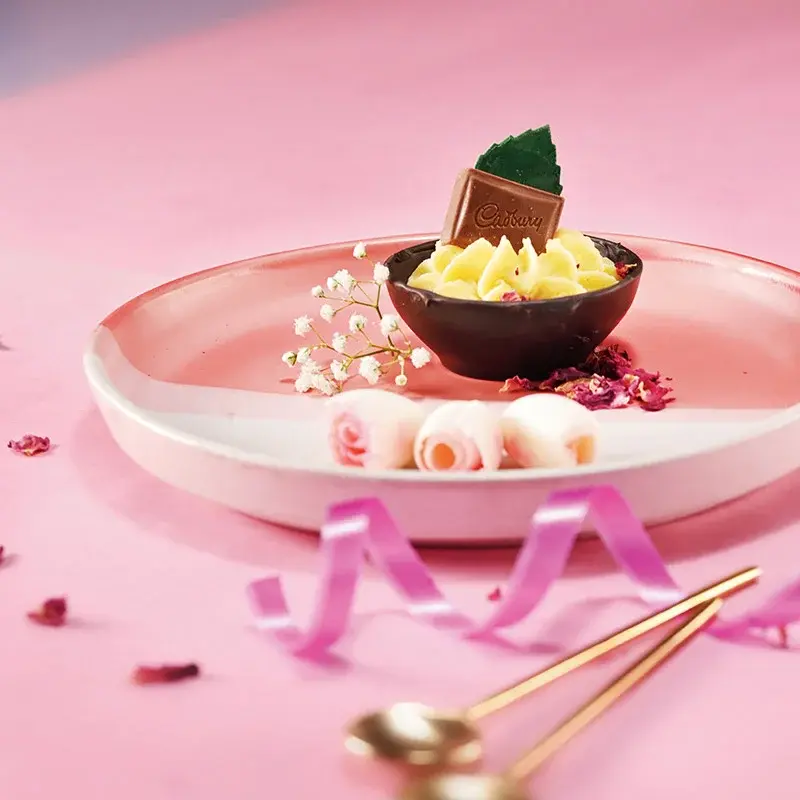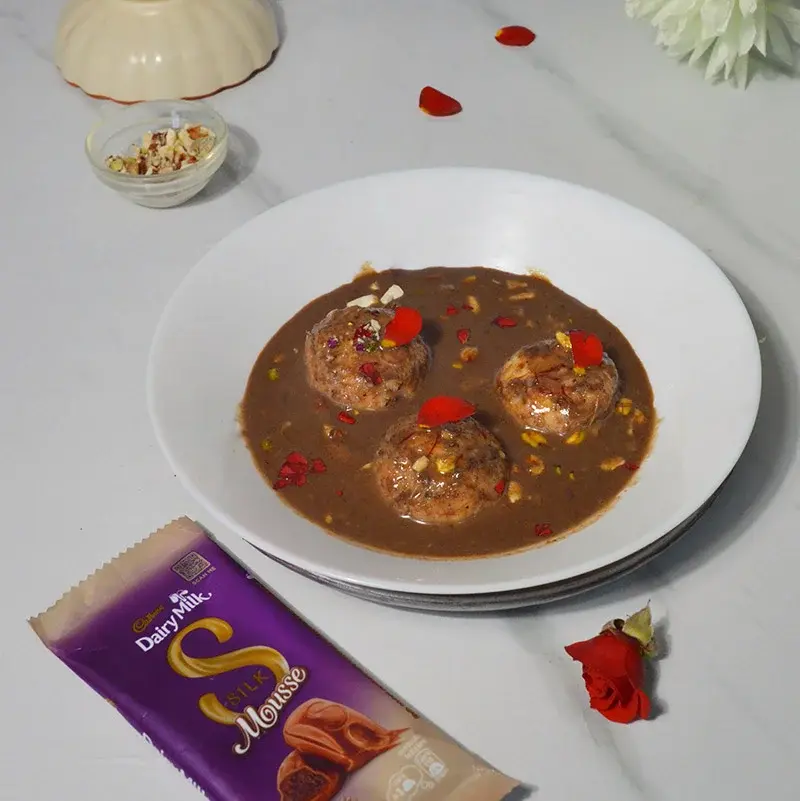Habshi halwa is a winter delicacy that is prepared in India and Pakistan. It is a popular dessert that is prepared using pantry staples in a delectable blend. So, let's learn more about this wonderful dessert.

The winter season brings various changes to our lives, from our outfits to our diets. While we change many things during this season, it is also the time when festivals and celebrations are abundant. Indian cuisine in particular has something for every season and desserts are one of them.
Of those desserts, habshi halwa stands out as one of the best winter delicacies from Indian cuisine. The toasy aroma of the wheat flour and the fragrant ghee fill up the air, making this one a decadent dessert that is prepared with pantry staples and tastes like heaven.
The preparation of a habshi halwa is straightforward, and you can enjoy it during festivals, to mark any celebration, or on any regular day. So, let's go through what exactly is habshi halwa and how you can make this irresistible dessert in your kitchen. Keep reading to learn more about habshi halwa.
What Is Habshi Halwa?

Habshi halwa, a popular Pakistani and Indian delicacy, is a creamy milk halwa produced by blending milk, sugar, sprouted wheat, ghee, aromatic spices, and almonds. This popular sweet treat is typically flavored with cardamom, saffron, rose water, or kewra essence, and it gets its crunchy texture from crushed nuts, including pistachios, walnuts, almonds, and cashews.
The word habshi in the name of this sweet dish refers to the halwa's unusual dark brown color since the Urdu habshi is related to the Persian or Arabic word 'habashi', which is used to refer to Africans or people with darker skin tones. Habshi halwa, a sticky, chewy, and nutty winter delight, is thought to have originated during the Mughal Empire. It is typically taken as a dessert after a large dinner.
The History Of Habshi Halwa

Let's take a journey through time and discover how this dish came into existence and the reason behind its infamous name. Halwa has its roots in Arabic lands and made its way to ancient India through Persia, as detailed in Abdul Halim Sharar’s book “Guzishta Lucknow.”
Suleiman, the eleventh and longest-reigning Sultan of the Empire, loved sweets so much that he even constructed a special kitchen solely for making sweet delicacies, including halwa. Now, let's delve into the history of Habshi Halwa, which goes by various names, such as Halwa Sohan, Multani Sohan Halwa, Jauzi Halwa, and more.
In Afghanistan, Jauzi Halwa is made from germinated wheat flour and contains the same ingredients as Habshi Halwa. Nawab Hamid Ali Khan brought an African hakim to Rampur and ordered him to produce a certain type of pudding.
The hakim prepared the pudding using desi ghee, mixing all of the herbs, dried fruits, and sweetening ingredients known as Habshi halwa as directed by Hamid Ali. People loved this halwa during Nawab Hamid Ali Khan's reign, and they still do in tribute to his love for the sweet delight.
Habshi Halwa is an incredible and delectable Indian dish that was once considered a princely treat. The founder and chairman of the Haldiram Group, Mr. Shiv Kishan Agarwal, expressed a keen interest in tasting Habshi Halwa on a certain occasion in a conversation about its availability in India.
Thus, the halwa was brought in from Moradabad for him to try. And it turns out, Shiv Kishan really liked it a lot. It is one of the most exquisite Indian cuisines, with a plethora of flavors, aromas, and texture. When we think of this halwa, the term "incredible" comes to mind.
How To Make Habshi Halwa At Home?
Ingredients
- 1 cup of semolina
- 1 cup ghee
- cups of milk
- 1 cup of sugar
- 1 teaspoon of cardamom powder
- Chopped nuts like almonds, cashews, and pistachios for garnish
Method
- In a pan, melt the ghee and add the semolina. Roast it till golden brown.
- Heat the milk and sugar in a separate pan. Stir until the sugar is completely dissolved.
- Cook the roasted semolina in the milk mixture until it thickens over low heat. Mix in the cardamom powder thoroughly.
- Allow the mixture to cool on a greased tray. Serve garnished with chopped nuts.
Cooking Guide
- Saffron strands can be used for extra flavor and scent.
- To keep the semolina from burning, stir it often while roasting.
- Allow the habshi halwa to cool completely before cutting it into serving pieces.
Storage Instructions

- If you need to keep the halwa fresh for a longer period of time, then following a good storage method is necessary. Keep the dessert in an airtight container. Make sure you store it at room temperature.
- If you want to experiment with a creamy twist, then serve the halwa with a dollop of ice cream, preferably vanilla, for an indulgent experience.
- The halwa is best enjoyed during festivals or to mark any celebrations. It instantly elevates the festive platter but you can also enjoy it as a post-meal dessert to end your meal on a sweet note.
More Like This
Popular Articles



Trending Web Stories
Curated Recipes


















